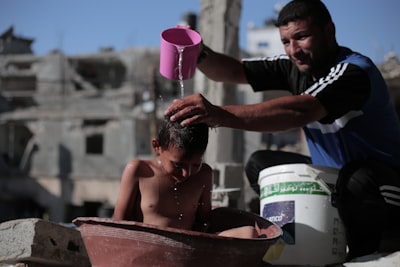Summary
The Israeli military has acknowledged that Palestinian civilians were harmed at aid distribution sites in Gaza, following a resumption of limited UN humanitarian deliveries. Since May 19, when an 11-week blockade was partially lifted, over 400 Palestinians—mainly seeking food—have died near these distribution centres. In response, Israel has issued new instructions to its forces and is reviewing these incidents.
This comes against a backdrop of fraught cooperation between Israel, the US-backed Gaza Humanitarian Foundation (GHF), and the United Nations. The UN criticizes the GHF's distribution model as unsafe and biased, citing risks of militarization and forced displacement. Meanwhile, Israel and the US accuse Hamas of diverting aid, a claim Hamas denies. Amid these disputes, the humanitarian crisis worsens: Gazans often walk for hours, risking their lives for the chance of receiving food. The broader conflict has killed over 56,000 Palestinians since October, when Hamas launched a deadly attack on Israel that killed 1,200 people and led to hostage-takings.
Analysis
The immediate cause for Palestinian deaths at aid sites is clear: a combination of severe food insecurity, crowding at distribution points, and active military operations nearby. However, a deeper analysis reveals competing agendas and contested narratives. Israel’s acknowledgment of civilian harm and pledge to adjust protocols may reflect both genuine concern and damage control amidst international scrutiny. The GHF’s operational risks—highlighted by UN Secretary-General Guterres—stem from attempts to bypass what are seen as compromised or blocked channels; yet, this move introduces further dangers for civilians forced to travel through unsafe, militarized zones.
There is an unmistakable politicization of aid: the distribution of food and medicine becomes intertwined with questions of legitimacy, control, and messaging. The UN’s refusal to cooperate with the GHF due to neutrality concerns points to longstanding skepticism about humanitarian operations being used as tools of military or political influence. Simultaneously, Israel’s framing of UN objections as tacit support for Hamas exemplifies the zero-sum logic dominating discourse around Gaza. Civilians, as always, bear the brunt.
Discussion
The central tragedy here is not simply that aid has become dangerous, but that relief is being leveraged within the larger logic of war. Basic tenets of humanitarianism—neutrality, impartiality, and safety—are eroded when parties to conflict prioritize strategic gain over civilian protection. When the administrator of an aid operation is accused of partiality, and the provider of safe passage is also the party to the conflict, what hope is there for the vulnerable caught in the middle?
This episode parallels other conflicts—such as Syria or Yemen—where access to aid itself becomes a weapon. International law is clear that civilians must be protected, yet accountability mechanisms are easily sidestepped. The figures—more than 400 dead at food queues, tens of thousands more killed overall—are deeply sobering, yet missing in much public discourse are the granular stories of desperation, dignity, and survival that underlie these statistics.
The issue also raises larger questions: Can any meaningful humanitarianism survive when aid itself is militarized or politicized? What alternative models exist for civilian protection when international systems are subverted by the demands of war and shifting alliances? Should the international community press for stronger, independent oversight of relief delivery, or will politics always outpace reform?
Ultimately, the continued suffering of Gazan civilians—driven by hunger, displacement, and insecurity—demands more than expressions of regret or incremental policy adjustments. It requires a fundamental reckoning with how the machinery of aid interacts with the machinery of conflict, and whether the world is willing to insist on the independence and safety of those who deliver (and receive) basic goods amidst violence.

Comments
No comments yet. Be the first to comment!